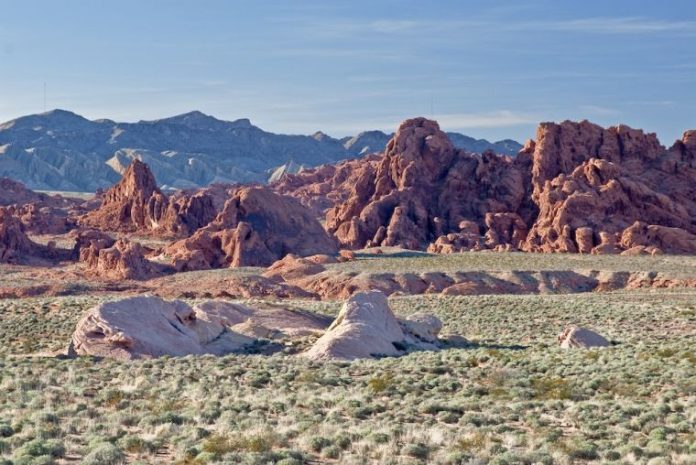I have been rethinking Nevada. It took a number of years for me to see the special beauty of the desert. But much of the Great Basin, which comprises most of Nevada, still seemed like a wasteland that held no allure. The state, at least the portion of it one sees from Interstate 80, is a succession of drab brown mountain ranges dotted with dull gray-green sagebrush. It is a landscape I was always anxious to cross as quickly as possible.
I was prompted to take a deeper look when I thought of the solitude that was surely out there. While tourists are flocking to the dazzle of Yosemite or Sequoia National Parks, very few people are probing Nevada’s hinterlands. The utter silence and the immensity of the landscape have their own dazzle even if the landscape might not make a good postcard.
One evening last summer on my way to Wyoming, I spent the night at the site of an old Nevada ghost town. It was a barren setting beside a remote salt flat, but the reach of the view was immense. I sat in my camp chair by the side of an old cemetery. Two thunderstorms, one many miles to the north, the other far to the south, pounded distant mountain ranges. But I sat in warm, dead-still air and complete silence as sunset approached. The austerity of the scene added to the whole effect. It was a rare magic moment.
As I read more about Nevada, I learned that there are beautiful wild places that punctuate the drabness for those willing to venture off the interstate highways. Natural beauty and solitude? Nevada is no longer a barrier; now, it is a unique destination.
On a recent trip to Zion National Park, I drove through Las Vegas and southern Nevada. On my way home, I turned south off of Interstate Highway 15 onto Highway 169. The road passes through Logandale and Overton before turning into Valley of Fire State Park just a few miles above Lake Mead. The approach to the park hinted at what lay ahead. Round bulges of bright red sandstone began to pop up above the sand and sagebrush.
By the time I reached the visitor center, I was surrounded by rock formations that folded and twisted in the most artistic ways. The scenery in every direction looked enticing, but I only had one day, so I sought guidance from the ranger inside. Following his advice, my first stop was Mouse’s Tank Trail, a short distance down White Domes Road. The highlight of this short trail is the many petroglyphs left behind by the Native Americans that lived in the area between 300 BC and 1150 AD.
There are interesting arches and formations in this park, but the real attraction is simply the beauty of the red rock along the gently rolling park terrain. I had the most fun when I stopped at a roadside parking area and wandered freely toward the sculpted rock heights. Over a sandstone hump, into a sandy wash, up another rock dome, and into a higher wash, closed off here, redirected there, until I stood on top of the highest spot I could see. Miles of magic views spread beneath me with not another person in sight.
You might have seen Valley of Fire State Park without knowing it. Lots of car commercials and movies have been filmed there. It’s no wonder. This park is beautiful. Only sixty miles from Las Vegas, even the most dedicated gambler won’t miss his time at the tables.










